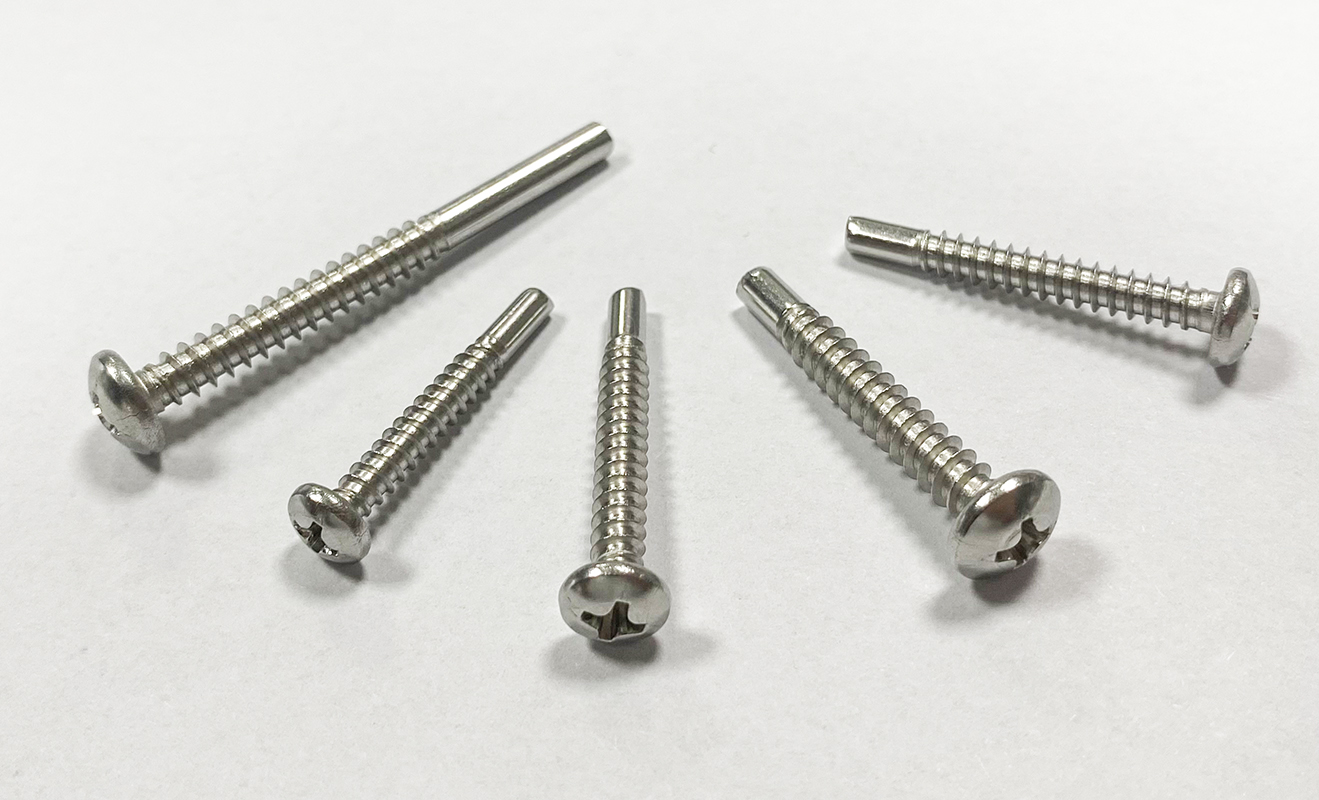
1. What Is a Pilot Point Screw?
A Pilot Point Screw is a type of self-tapping fastener that features a small, unthreaded tip — the “pilot point” — which guides the screw into the material before the threads engage.
This design minimizes the risk of walking, ensures a straight start, and reduces installation torque. It’s especially useful in sheet metal, plastics, and thin-gauge assemblies where precision matters.
2. Understanding Pilot Point Design
Pilot Point Design is all about control and efficiency. The tapered, pointed section acts as a self-centering guide, helping the screw enter the substrate smoothly without pre-drilling in many cases.
Key advantages include:
Reduced material displacement
Faster engagement and threading
Improved hole alignment
Lower driving torque and wear on tools
In manufacturing and assembly, this means faster production lines, fewer damaged parts, and longer-lasting tools.
3. DIN7981 Screw Specifications Overview
The DIN7981 standard defines pan head self-tapping screws with a cross (Philips) drive and pilot point tip.
Typical specification parameters include:
Thread type: AB or B (depending on application)
Head type: Pan head with cross recess
Material: Stainless steel (A2/A4) or carbon steel
Drive: Phillips cross recess
Finish: Plain, zinc-plated, or passivated
Size range: 2.2 mm – 6.3 mm nominal diameter
These DIN7981 Screw Specifications ensure consistency in mechanical strength, corrosion resistance, and thread compatibility across global production.
4. Material and Finish Options
Choosing the right material determines performance and longevity.
Stainless Steel A2 (304): Ideal for indoor and mild outdoor environments
Stainless Steel A4 (316): Superior corrosion resistance for marine or chemical use
Zinc-Plated Carbon Steel: Economical for general indoor use
Surface treatments like passivation, black oxide, or nickel plating further enhance corrosion protection and appearance.
5. Common Applications of Pilot Point Screws
Pilot Point Screws are widely used across industries:
Electronics: Mounting circuit boards or enclosures
Automotive: Assembling interior panels and brackets
HVAC systems: Securing sheet metal ducts
Furniture and Fixtures: Fastening metal-to-plastic joints
Industrial Equipment: Reliable fasteners for assembly lines